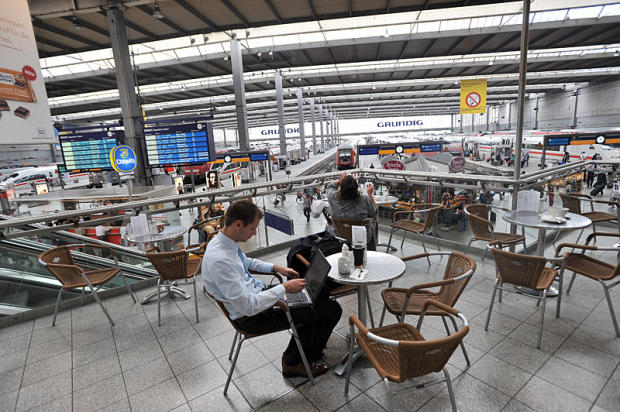Roth Experience: Munich
Day 1 of Timothy Carlson's trip upon arrival at Munich airport is a photo gallery exploration of this beautiful and historic Bavarian capital
Munich, the thriving capital of Bavarian Germany, is a center of art, technology, business, education, tourism and beer hall antics during Oktoberfest. Its 1.2 million residents love their football (soccer) team, their city of sensual beauty and fun.
But through history, Munich has been the focal point of ancient royal rivalries and many dark and tragic events. From the failed Beer Hall Putsch in 1923 and throughout his evil reign from 1933 through 1945, Munich was one of Adolph Hitler's strongholds of support.
After Germany's surrender to the allies, the German people struggled hard to rebuild as a peace-loving, tolerant, progressive people of democratic principles. The 1972 Olympics was to be their coming out party. Sadly, their very impulse to eliminate any signs of their militaristic past and stage a Woodstock-style athletic love-fest left the Olympic security open to terrorism.
Today, Munich remains a magnet for everyone who loves art, culture, history and beauty and a friendly welcoming people, cherishing each new day in the sun.
Standing in line to verify my rail ticket 184 km north to Nuremberg, Swedish ITU star Lisa Norden smiles and says 'hello." Last we met, the 2nd place photo finisher at Madrid survived a cramp and out-of-the-top 10 finish at the Washington DC Dextro Energy Triathlon, then a 7th at Hy-Vee. She's on her way from 4th at Europeans to a training camp in the mountains.
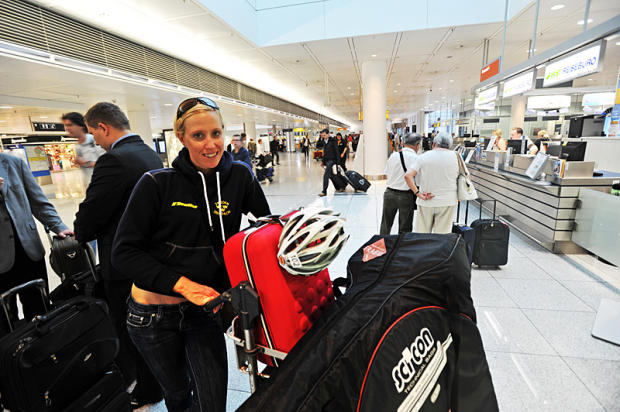
The Neo-Gothic Rathaus (no not a home for rats, the city hall) in Marienplatz is the city's heart and soul gathering place. Built from 1867-1909, it's festooned with statues of Bavarian kings and saints and allegorical figures and beastly gargoyles.
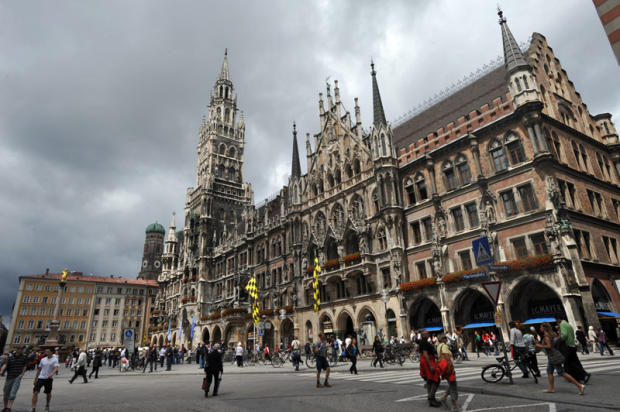
The world meets in Marienplatz, once a 12th century salt and corn mafrket, now a vibrant modern city center.

Every day at 11 AM and 5 PM, the bells ring and the crowds stare out for the daily performance of the amazing 260-foot high Glockenspiele, a mechanical cuckoo clock of Gulliverian proportions which features mechanical knights, fair maidens and dancing coopers.
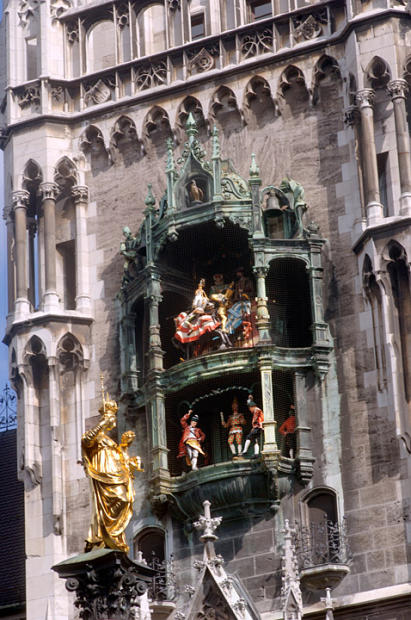
The Old Rathaus was built in the 15th century and remodeled in the 19th and rebuilt after damage in World War II. Standing next door to the new Rathaus, it holds a collection of amazing toys.
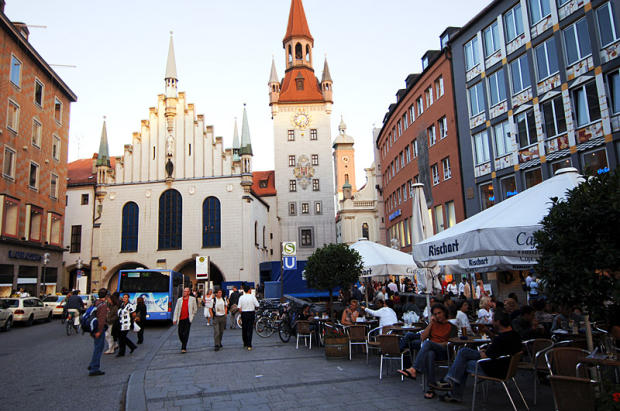
Old Peter's Church has an ethereal quality, topped by the pristine ceiling murals.
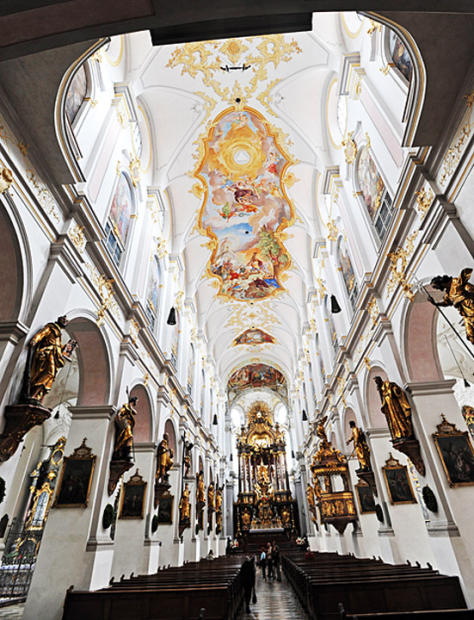
Another Munich church, decorated by lively statues and fronted by a colorful statue of a Lion – Munich's municipal symbol.
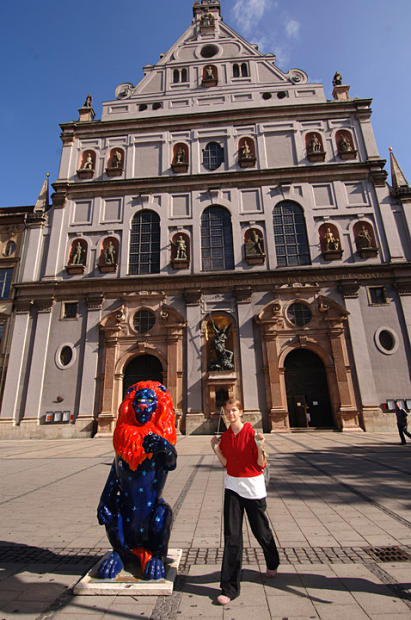
Fountain at the entrance of Der Residenz — extravagant home of Bavarian Kings first built in the 14th century, with major expansion in the 17th and a museum since the 1920s.
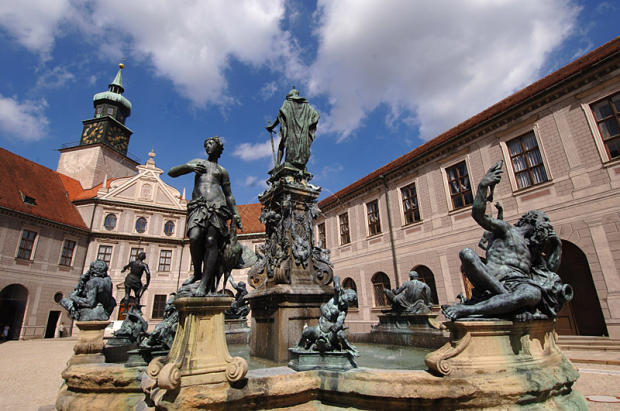
No, this is not Caesar's Palace, a modern faux illusion of luxury. This is the real thing. This hallway is one of 60 or more
rooms of magnificent opulence once enjoyed exclusively by royalty and their pampered guests.

Just when you thought you'd seen it all, this final corridor of light and infinitely artful detail reminds you are leaving the unreal digs of Bavarian royalty.
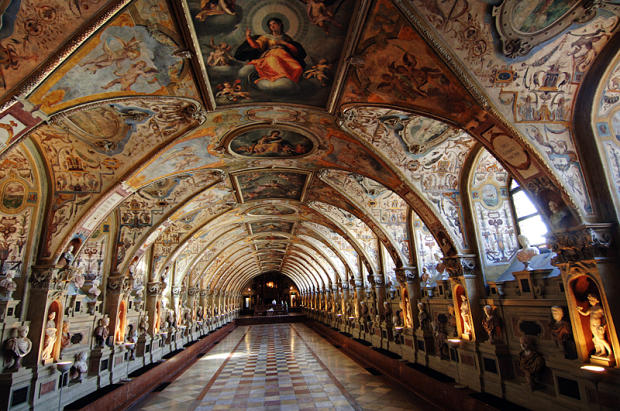
St. Cajetan's, built in 1609, is one of Munich's most magnificent church's. Situated in the Odeonplatz at the foot of Ludwigstrasse, it stands next to one of Munich's most notorious buildings – the Feldherrrnhalle (LEFT).
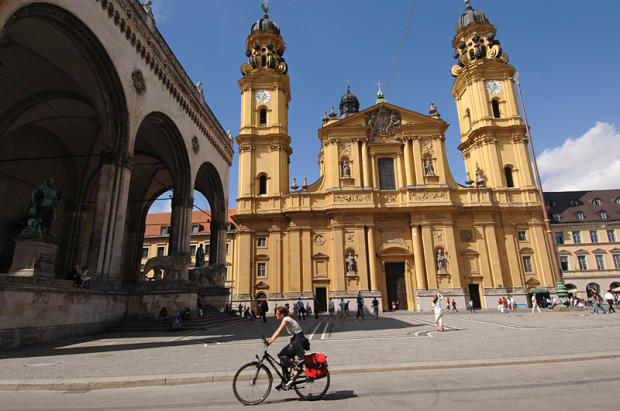
This lovely statuesque lion guards the Felldherrnhalle, built to honor the heroes of the Franco-Prussian War. But on November 8, 1923, Hitler and 2,00 of his cronies marched from the nearby Burgerbraukeller to this monument in an attempt to take over central Munich. The so-called Beer Hall Putsch (coup d'etat) failed, 16 of his men were shot, and Hitler was imprisoned. Unfortunately, this was not the end of his story.
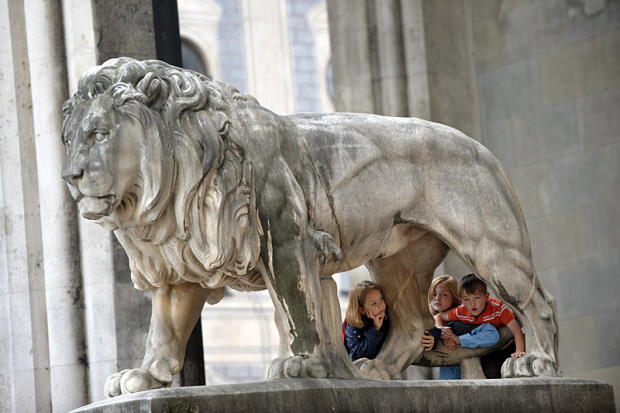
While the Burgerbraukeller no longer exists, the sunny and happy and apolitical Hofbrau House offers Munich's most famous Oktoberfest beer hall flavor all year long.
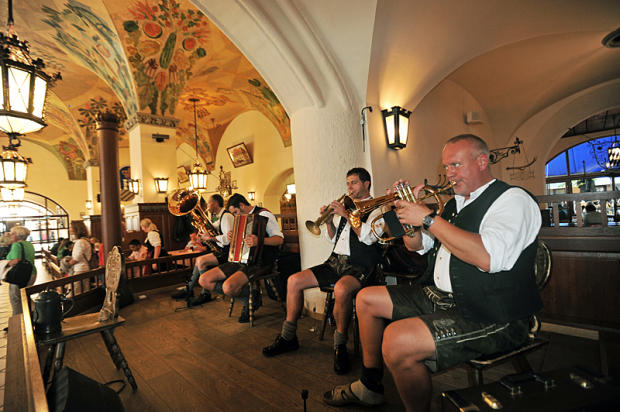
As far as triathlon is concerned, 2005 Ironman World Champion Faris Al-Sultan is Munich's most famous citizen. Pictured here in 2006 at the home of his German-born mother and distinguished Middle Eastern father, Al-Sultan is a modern, progressive Arab, a symbol of Germany's tolerance and democratic respect for humanity. Ironically, the Al-Sultans live just 5km from the tragedy-scarred 1972 Olympic athletes' compound.
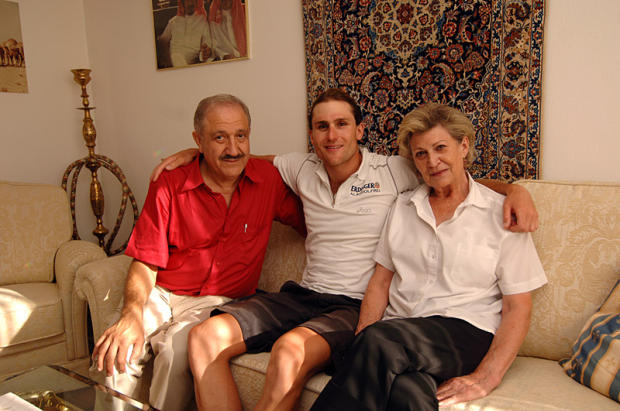
The iconic television tower and spider-like netting enveloping the Olympic Stadium.
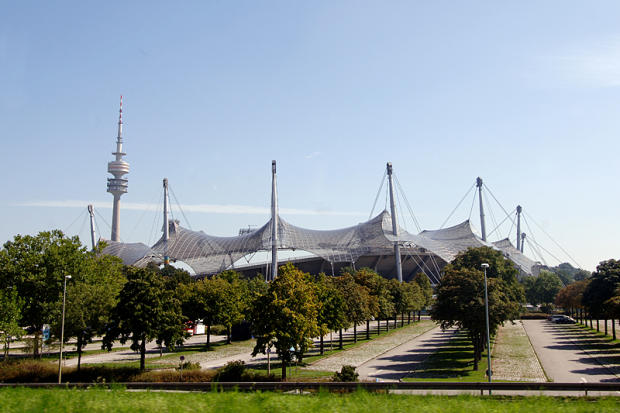
The 1972 Munich Olympic Stadium, an architectural triumph, built with wishes for world peace and sporting glory. There were great performances, like the 5000 meter final where Lasse Viren triumphed over Pre. But there was also a bad joke — the impostor who stole into the stadium before the arrival of Franck Shorter's epic marathon victory. But the dominant memory was the tragic memorial ceremony for the slain Israeli team.
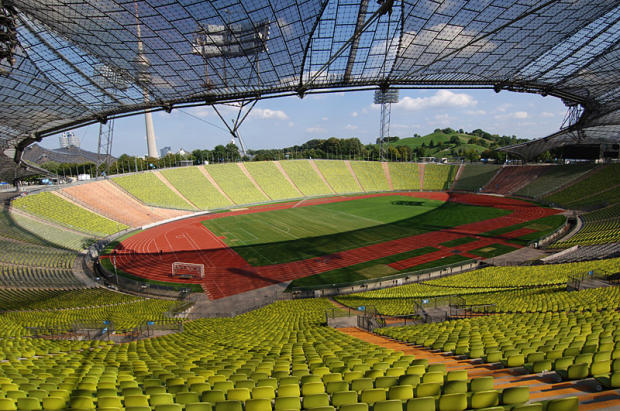
Every year on September 6, flowers are placed at the plaque memorializing the 11 Israeli Olympians slain by the Palestinian Black September – one of the first acts of a tragically long toll of modern terrorism.

The balcony of the Olympic athletes' compound at 31 Connollystrasse where Black September held the Israeli athletes hostage on September 5-6, 1972. This angle shows the corner of the building where Arab terrorist Afif Ahmed Hamid, wearing a ski mask, was photographed and became the iconic image of this tragic event.
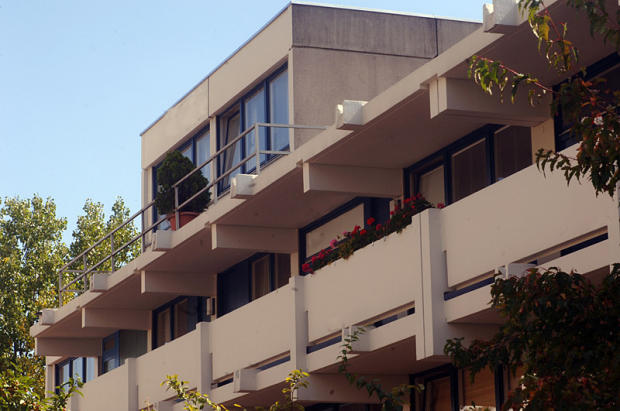
Just 10 miles from Munich lies the infamous concentration camp at Dachau, which now is a powerful memorial which serves as a warning against the inhuman tyranny and genocide unleashed by Hitler and the Nazis. The sign "Arbeit Macht Frei" (Work makes you free) greeted Jews entering the camp.
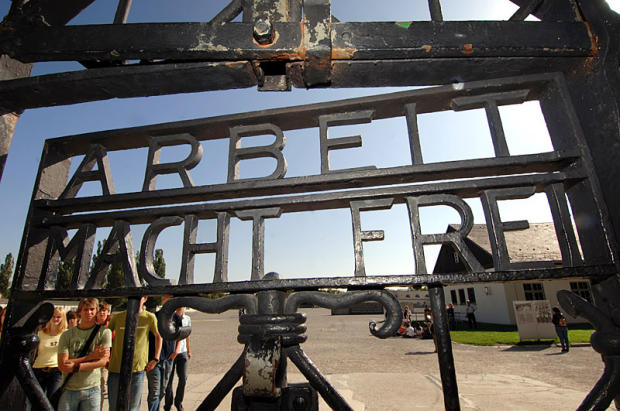
A modern Munich businessman works at his laptop before catching a train at the bustling Hauptbahnhof (Main Train Station).
